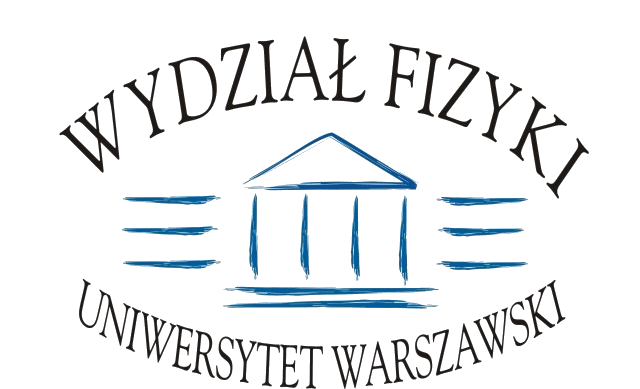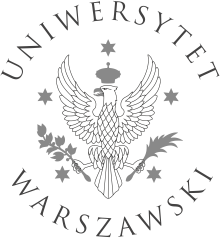Seminarium Teorii Oddziaływań Elementarnych
2006/2007 | 2007/2008 | 2008/2009 | 2009/2010 | 2010/2011 | 2011/2012 | 2012/2013 | 2013/2014 | 2014/2015 | 2015/2016 | 2016/2017
2012-07-09 (Poniedziałek)
Marek Karliner (Tel Aviv University)
New States with Heavy Quarks
I discuss several highly accurate theoretical predictions formasses of baryons containing the b quark which have been recentlyconfirmed by experimental data from CDF, LHCb and CMS. Proper treatment of the color-magnetic hyperfine interaction in QCD is crucial for obtaining these results. Several predictions are given for additional properties of heavy baryons. I also discuss the two charged exotic resonances Z_b with quantum numbers of a (b bbar u dbar) tetraquark, very recently reported by Belle in the channel Upsilon(nS)pi+, n=1,2,3. Among possibleimplications are deeply bound I=0 counterparts of the Z_b-s andexistence of a (Sigma_b +Sigma_b-) dibaryon, a beauteron.
2012-06-04 (Poniedziałek)
Tania Robens (TU Dresden)
Alternative subtraction scheme using Nagy Soper dipoles
We propose a new subtraction scheme for next-to-leading order QCD calculations. Our scheme is based on the momentum mapping and on the splitting functions derived in the context of an improved parton shower formulation. Compared to standard schemes, the new scheme features a significantly smaller number of subtraction terms and facilitates the matching of NLO calculations with parton showers including quantum interference. We provide formulae for the momentum mapping and the subtraction terms, and present a detailed comparison with the Catani-Seymour dipole subtraction for a variety of scattering processes.
2012-05-28 (Poniedziałek)
w dniach 28.05-1.06.2012 w Galerii Porczyńskich
Zapraszamy na Konferencję PLANCK 2012
we invite you to the PLANCK 2012 Conference
2012-05-21 (Poniedziałek)
(IFT UW)
Seminarium nie odbędzie
2012-05-14 (Poniedziałek)
Juergen Reuter (DESY, Hamburg)
New Resonances in WW Scattering at the LHC
2012-05-07 (Poniedziałek)
Venus Ebrahimi-Keus (Université de Liege)
Z_p scalar dark matter from multi-Higgs-doublet models
In many models, stability of dark matter particles is protected by a conserved Z_2 quantum number. However dark matter can be stabilized by other discrete symmetry groups, and examples of such models with custom-tailored field content have been proposed. Here we show that electroweak symmetry breaking models with N Higgs doublets can readily accommodate scalar dark matter candidates stabilized by groups Z_p with any $p \le 2^{N-1}$, leading to a variety of kinds of microscopic dynamics in the dark sector. We give examples in which semi-annihilation or multiple semi-annihilation processes are allowed or forbidden, which can be especially interesting in the case of asymmetric dark matter.
2012-04-23 (Poniedziałek)
Jakub Kuczmarski (IFT UW)
Search for unitarity breaking in the WW scattering at the LHC
2012-04-16 (Poniedziałek)
Stanisław Głazek (IFT UW)
Elementary example of mass mixing
Most relativistic quantum field theories of interest appear to involve an unsolved problem of constructing the ground state, called vacuum. An elementary example of the vacuum problem in the standard form of dynamics appears already in a theory in which the entire interaction is reduced just to a mass-mixing term. However, this elementary example can be solved using a new renormalization group procedure for effective particles in Dirac’s front form of Hamiltonian dynamics and the exact relativistic solution is obtained without a need to consider the vacuum problem. The seminar is to explain how the new procedure works around the vacuum problem in the example.
2012-04-02 (Poniedziałek)
Robert Szafron (Uniwersytet Śląski)
Rho - gamma mixing and e+e- vs. tau spectral functions
2012-03-26 (Poniedziałek)
Paweł Pachołek (IFT UW)
Grand Unification in the minimal Z' model
The minimal Z' model can be considered as a low-energy limit of some SO(10)-GUT models. Unification of gauge coupling constants can provide important constraints on the Z' mass and its couplings to SM fermions. These constraints are compared with the latest results from the LHC and electroweak precision tests.
Stron 1 z 4






